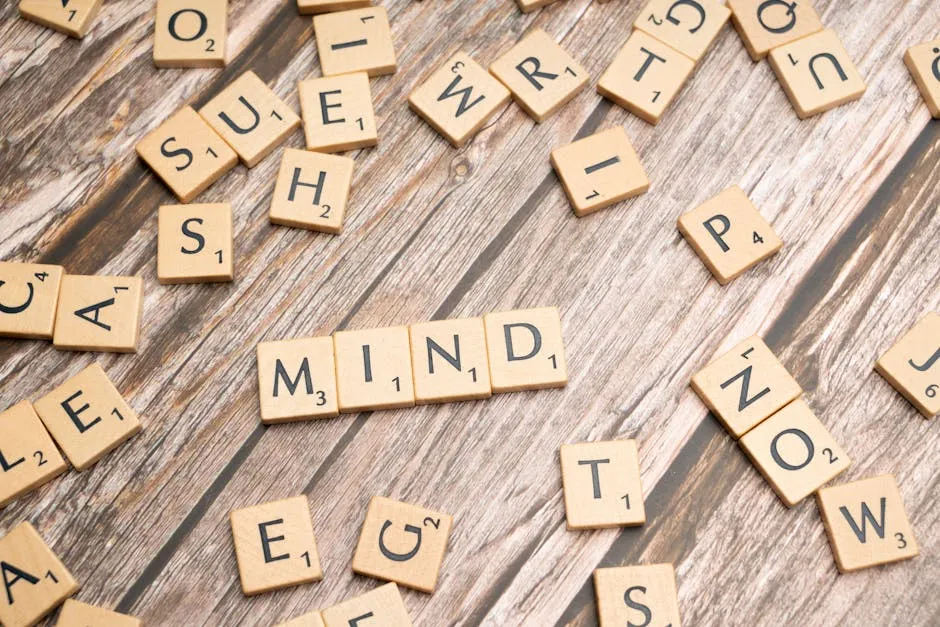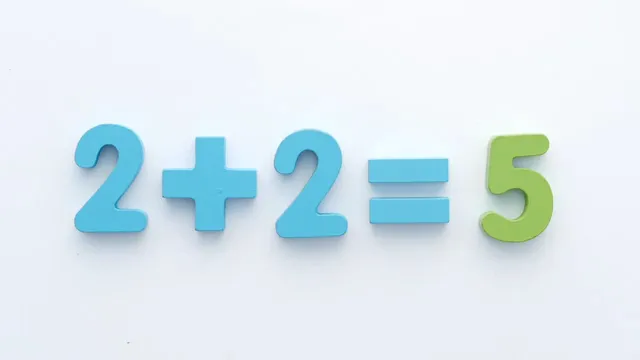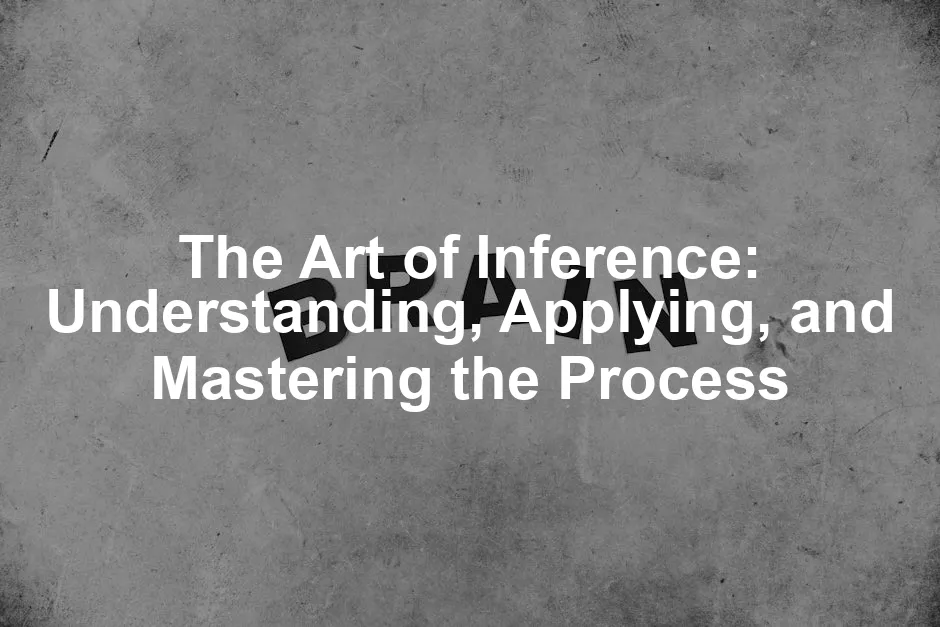Introduction
In the world of reasoning, inference plays a crucial role. Think of it as the behind-the-scenes magician, pulling conclusions from the hat of observations. From predicting the results of a sports match based on past performances to forecasting next week’s weather using current conditions, inference is the connective tissue of our decision-making processes.
But what is inference? Simply put, it’s the process of deriving logical conclusions from available facts. Imagine you’re watching a game. You see a team consistently score more points against weaker opponents. You might infer they’ll struggle against a stronger team. In essence, you’re not just observing; you’re making educated guesses based on what you know.
Inference is important because it shapes how we interpret information and make choices. It’s not just about what you see; it’s about what you can logically deduce from it. This article will take you through the complex yet fascinating world of inference. We’ll break down its various types, real-world applications, and even discuss the common pitfalls that can lead to erroneous conclusions.
By the end of this journey, you won’t just understand inference; you’ll be ready to wield it like a pro. Whether you’re navigating daily decisions or tackling more complex problems, mastering inference will elevate your reasoning skills to new heights. So, prepare to unlock the layers of this essential cognitive process, and let’s get started!

Summary Section
Inference is more than a fancy term; it’s a core process that helps us draw conclusions from evidence and reasoning. In this article, we’ll clarify what inference really means while diving into its definitions, types, and practical applications across multiple fields. We will discuss:
- The distinctions between deduction, induction, and abduction, highlighting their unique reasoning approaches.
- The essential role of inference in human thinking and artificial intelligence, impacting everything from everyday choices to advanced machine learning algorithms.
- The significance of statistical inference in understanding uncertainty and bolstering scientific research.
- Common fallacies that can arise with inference, along with tips to sidestep them.
- Practical uses of inference in various sectors, including logic, AI, and Bayesian statistics.
Curious yet? Let’s peel back the layers of this intriguing cognitive phenomenon!
Understanding Inference
Definition of Inference
Let’s start by breaking down what inference actually means. The word “inference” comes from the Latin root inferre, which means to “carry forward.” This hints at its core purpose: moving from existing information to new conclusions. In essence, inference is the mental leap we make when we draw conclusions from data or observations.
In more formal terms, inference can refer to two main ideas. First, it is the conclusion reached based on evidence and reasoning. Second, it describes the process of arriving at such a conclusion. Think of it as the difference between the “what” and the “how.” You might infer that it’s going to rain based on dark clouds (the conclusion), but the process involves evaluating the weather patterns (the action of inferring).
In the realm of reasoning, inference plays a pivotal role. It helps us connect dots in our understanding of the world. Sometimes, however, we can get it wrong. Just because we infer something doesn’t mean it’s true. In fact, many conclusions drawn from faulty premises can lead us astray.
Speaking of faulty premises, if you’re in the mood to explore the intricacies of human thought, consider picking up “Thinking, Fast and Slow” by Daniel Kahneman. This book will take you on a journey through the dual systems of thought, helping you understand how our minds work and where they can lead us astray.

Types of Inference
Now, let’s talk about the different flavors of inference. Picture a buffet of reasoning options! We can broadly categorize these into three main types: deductive reasoning, inductive reasoning, and abductive reasoning. Each type has its unique characteristics and applications.
Deductive Reasoning: This is often seen as the gold standard of inference. Deduction starts with general premises and moves to a specific conclusion. For instance, consider this classic syllogism:
- All humans are mortal.
- Socrates is a human.
- Therefore, Socrates is mortal.
In this case, if the premises are true, the conclusion must also be true. Deductive reasoning offers a solid framework, but it’s only as good as the premises it starts with. If the premises are flawed, the conclusion can be too.
Inductive Reasoning: Now, let’s shift gears to induction. This method works the opposite way. It begins with specific observations and builds toward a general conclusion. For example, if you’ve observed that the sun has risen in the east every day of your life, you might conclude that it always rises in the east.
Inductive reasoning is powerful, particularly in scientific inquiry. However, it comes with a catch: it’s not foolproof. Just because the sun has risen every day doesn’t guarantee it will tomorrow. Inductive reasoning introduces a degree of uncertainty, making it essential to assess the strength of the evidence behind your conclusions.
Abductive Reasoning: Finally, we have abductive reasoning, which can be thought of as the detective of the group. Introduced by Charles Sanders Peirce, this method involves forming the most likely explanation based on the available evidence. For instance, if you walk into a room and see a broken vase, you might infer that someone knocked it over.
Abductive reasoning is useful when we have incomplete information. It focuses on the best possible explanation rather than absolute certainty. While this can lead to insightful conclusions, it also opens the door for errors, as the “best” explanation might not always be the true one.
So, whether you’re deducing, inducing, or abducting, understanding these types of inference can sharpen your reasoning skills. Each method has its strengths and weaknesses, and knowing when to apply each can enhance your decision-making prowess. Embrace the art of inference, and you’ll find it’s a powerful tool in your cognitive toolkit.

The Process of Inference
How Inference Works
Inference is a fascinating mental gymnastics exercise. It’s the way our brains connect the dots, turning scattered pieces of information into coherent conclusions. Imagine standing at a coffee shop, watching a barista juggle orders. You see them frowning at a cup, glancing at the clock, and hear a customer sigh. From this, you might infer they’re late with an order. The brain quietly stitches these observations together, forming a logical tapestry.
At the heart of inference lies a series of cognitive processes. First, there’s perception. We observe the world around us and gather data. Next, we analyze this information. We ask ourselves questions: What does this mean? Is there a pattern here? Finally, we draw conclusions based on the evidence at hand. This process can be quick, almost instinctual, or it can take time to sift through complex data.
Evidence is the backbone of any inference. Without it, we’re left floundering in the sea of speculation. For example, if you see dark clouds, you might infer rain is coming. But if you hear distant thunder and feel humidity in the air, your conclusion becomes even stronger. Inferences built on solid evidence are much more reliable. However, relying on flimsy evidence can lead to erroneous conclusions. So, the next time you find yourself making a guess, ask: What’s the evidence supporting this?
To support your inference-making process, why not consider a Smart LED Desk Lamp? It provides excellent lighting for your study sessions, ensuring you can analyze and infer without straining your eyes.

Models of Inference
Inference comes in various flavors, each with its unique methods and applications. Let’s dive into two prominent models: statistical inference and Bayesian inference.
Statistical Inference: This model is all about making educated guesses about populations based on sample data. Think of it like sampling a delicious soup. You taste a spoonful and make an assumption about the entire pot’s flavor. Statistical inference methods include confidence intervals and hypothesis testing.
A confidence interval provides a range in which we expect a population parameter to fall, offering a sense of certainty. For instance, if a poll shows that 60% of voters support a candidate, a confidence interval might suggest that between 55% and 65% of the entire population feels the same way.
Hypothesis testing, on the other hand, is a bit like a courtroom drama. You start with a null hypothesis (the assumption of no effect) and gather evidence to challenge it. If the evidence is compelling enough, you reject the null hypothesis in favor of an alternative.
Bayesian Inference: Welcome to a world where prior beliefs matter! Bayesian inference takes a different approach by incorporating existing knowledge. It uses Bayes’ theorem to update our beliefs as new evidence arrives. Imagine you’ve always thought your neighbor is friendly. Then, one day, you see them arguing loudly with someone. Your initial belief might shift based on this new data.
This model allows for a flexible way to reason about uncertainty. With Bayesian inference, you start with a prior belief, then adjust it as you gather more evidence. This is particularly useful in fields like medicine, where prior studies inform current decisions.
Both statistical and Bayesian inference offer powerful frameworks for reasoning. They help us make sense of complex information and guide our decision-making processes. By understanding these models, we can sharpen our inferential skills, making us better equipped to tackle real-world challenges.

Common Pitfalls in Inference
Fallacies and Biases
Inference can be a tricky business, often leading us down the rabbit hole of faulty logic. Let’s uncover some common logical fallacies and cognitive biases that can skew our reasoning.
First up, logical fallacies. These are errors in reasoning that undermine the logic of an argument. For instance, the straw man fallacy misrepresents an opponent’s argument to make it easier to attack. Imagine someone arguing that we should focus on renewable energy sources. A straw man response would be, “So you want us to stop using electricity altogether?” Clearly, that’s a misrepresentation.
Another classic is the ad hominem fallacy, where one attacks the character of the person making the argument instead of the argument itself. Picture a debate about climate change where one person says, “You can’t trust her opinion; she’s not even a scientist!” Instead of addressing the scientific evidence, they deflect to personal qualifications.
Now, let’s chat about cognitive biases. These are mental shortcuts that can lead to errors in judgment. One notorious bias is confirmation bias, where we favor information that confirms our existing beliefs. If you think pineapple on pizza is an abomination, you might only focus on articles that support that view, ignoring the plethora of people who love it.
Then there’s the availability heuristic, which causes us to overestimate the importance of information that’s readily available. If you recently read about a plane crash, you might irrationally fear flying, even though statistically, it’s one of the safest modes of transport.
These logical fallacies and cognitive biases can lead to incorrect inferences, steering us away from rational conclusions. Recognizing them is the first step toward clearer thinking.

Incorrect Inferences
Incorrect inferences can have serious consequences, especially in fields like law, science, and everyday life. Let’s take a look at some illustrative case studies.
In the legal realm, consider the infamous case of the “innocent until proven guilty” principle. A defendant was accused of theft based on circumstantial evidence. The prosecution inferred guilt because the defendant was found near the scene of the crime. However, it later emerged that he was merely walking home from a nearby store. This incorrect inference almost led to wrongful conviction, highlighting the dangers of jumping to conclusions based solely on situational context.
In the scientific community, we have the classic case of the cold fusion phenomenon. In 1989, researchers claimed to have achieved nuclear fusion at room temperature. Many scientists inferred a groundbreaking discovery. However, subsequent investigations proved the findings were based on flawed experimental methods. This incorrect inference not only misled the scientific community but also wasted resources and time.
Even in everyday life, we’re not immune to incorrect inferences. Imagine you see a friend at a coffee shop, looking upset. You might infer they’re annoyed with you. However, they could be dealing with a personal issue unrelated to you. Making such assumptions based on limited information can strain relationships unnecessarily.
These examples demonstrate how easy it is to make incorrect inferences. Whether in law, science, or day-to-day interactions, taking a moment to evaluate the evidence thoroughly can help avoid costly mistakes. Remember, just because you think you see the whole picture doesn’t mean you do! Always consider the context and the possibility of alternative explanations.

Applications of Inference
Inference in Artificial Intelligence
Inference engines are the unsung heroes of artificial intelligence (AI). These powerful tools take a set of rules and data, processing them to draw conclusions or make predictions. They help machine learning models operate more efficiently, allowing AI to mimic human reasoning in various applications.
Consider natural language processing (NLP). Here, inference engines analyze text to understand language, context, and user intent. Think about how your smartphone’s virtual assistant understands commands. It recognizes patterns and infers meaning from your input. For instance, when you say, “Set a timer for 10 minutes,” the assistant doesn’t just parse words; it infers that you want a countdown, adjusting its response accordingly.
Image recognition is another area where inference shines. AI systems analyze pixel data from images to identify objects, people, and even emotions. For instance, social media platforms use inference to tag friends in photos. The software compares facial features against a database, inferring identities from visual data.
These inference engines enable machines to learn from past experiences, adjust their responses, and improve over time. As AI evolves, the role of inference will only grow, leading to smarter systems that can better assist us in our daily lives.

Inference in Statistical Analysis
Statistical inference is the backbone of research methodologies. It allows researchers to draw conclusions from a sample and make predictions about a larger population. By analyzing data, statisticians can infer trends and make informed decisions.
One critical aspect of statistical inference is causal inference. This involves determining whether a relationship between two variables is causal rather than coincidental. For instance, if a study finds that people who exercise regularly tend to have lower blood pressure, researchers must infer whether exercise directly causes this effect or if other factors are at play. This distinction is crucial in scientific research, as it affects how findings are interpreted and applied.
Moreover, statistical inference provides a framework for hypothesis testing. Researchers formulate hypotheses based on existing knowledge and then collect data to test these hypotheses. If the data supports the hypothesis, it can be deemed valid; if not, it may need reevaluation. This process is essential for advancing knowledge across disciplines, from medicine to economics.
Without inference, researchers would have a hard time interpreting data, leading to flawed conclusions. Understanding statistical inference equips us to critically evaluate findings and make sound decisions based on evidence.

Inference in Everyday Life
Inference isn’t just for scientists or AI; it’s a daily companion in our lives. Every time you make a decision based on available information, you’re using inference. Let’s explore a few relatable scenarios.
Imagine you’re at a coffee shop. You spot a friend looking at their watch and frowning. You might infer they’re late for an appointment. This simple observation helps you gauge their mood and decide whether to approach them or give them space.
In the workplace, inference plays a vital role in problem-solving. Suppose a project deadline is missed. If team members seem stressed and overworked, you might infer that they need additional resources or support. This understanding allows you to address issues proactively.
Social interactions also thrive on inference. When someone tells a joke and others laugh, you can infer that the group appreciates humor. Conversely, if a comment is met with silence, you might infer it wasn’t well-received. These social cues guide how we communicate and navigate relationships.
In essence, inference helps us interpret the world around us. By drawing conclusions from observations and experiences, we enhance our decision-making skills, making our interactions smoother and more meaningful.

Conclusion
In conclusion, inference is a multifaceted process that underpins much of our reasoning in daily life. By understanding its types, applications, and potential pitfalls, we can enhance our decision-making skills and encourage more thoughtful reasoning. In artificial intelligence, inference engines enable machines to process information like humans, improving applications in natural language processing and image recognition. In statistical analysis, inference is crucial for drawing valid conclusions and making informed predictions based on data.
Moreover, inference plays a vital role in our everyday lives, guiding our interactions and decisions based on observations. Whether in the context of AI or daily judgments, mastering inference is essential for navigating an increasingly complex world. So, the next time you find yourself making a decision, remember the power of inference at play. Embrace it, and watch your reasoning skills flourish!
Before you go, consider reading “The Art of Thinking Clearly” by Rolf Dobelli. This book dives deeper into the cognitive biases that can affect our reasoning, making it a must-read for anyone looking to enhance their critical thinking skills.
Please let us know what you think about our content by leaving a comment down below!
Thank you for reading till here 🙂
All images from Pexels




